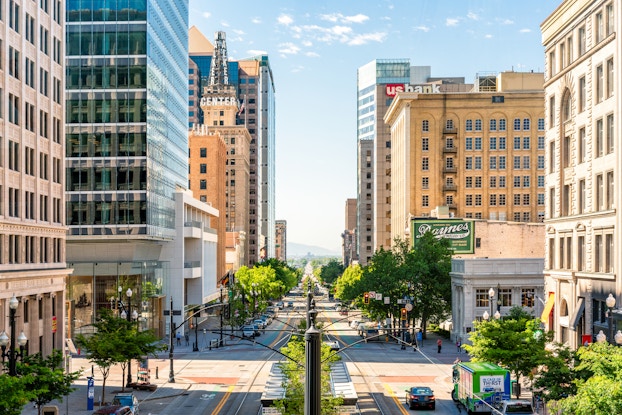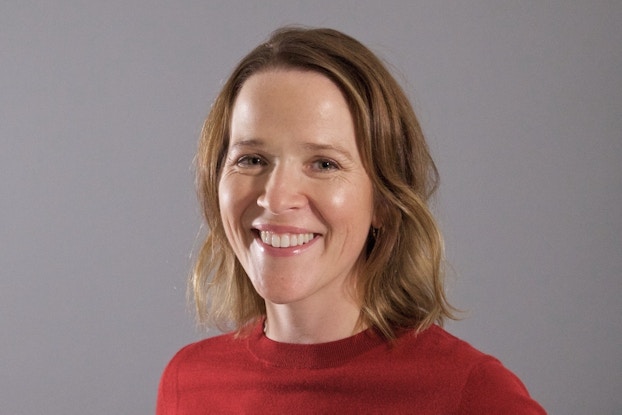
Why it matters:
- The metaverse — immersive, virtual experiences — is gaining mainstream consumer appeal. In turn, brands are finding ways to blend IRL and URL experiences, like selling digital merchandise, such as Nike NFT sneakers, alongside physical goods.
- Gen Z is growing up quickly and boasts an estimated $150 billion in spending power, which calls for businesses to keep step with a digitally native demographic cohort that tends to eschew traditional marketing messages.
- Marketers can lean into the post-pandemic consumer mindset by meeting the growing demand for self-care, as well as local goods and services from small- and medium-sized businesses.
In today’s unpredictable business landscape, it would be nice to have a crystal ball. The next best thing, however, can be insight from trend forecasters dedicated to predicting the future of commerce and culture as we know it.
At the start of a new year, CO— spoke to three of the industry’s noted futurists for a view into the five key trends that are set to drive business in 2022. Key callouts include embracing the metaverse; adjusting for the expectations of a rising generation of consumers; investing in physical customer experiences; and the growing role of self-care and localism in consumer experiences.
Embrace the metaverse
Few trending topics have gained as much traction heading into 2022 than the “metaverse”: a fancy word for the networks of social connection that increasingly fuse physical and digital realities. This rapid push of these immersive, virtual experiences into the mainstream has many businesses questioning how and when to participate. The key, forecasters say, is finding accessible ways to blend online and offline spaces.
Petah Marian, futurist and founder of global strategic foresight consultancy, Future Narrative, believes that businesses of all sizes should be paying attention to developments in this sphere.
“As brands accelerate their efforts into the metaverse, 2022 will see brands increasingly start to link up their IRL [in real life] and metaverse businesses, with virtual products being sold alongside physical goods, and shopping experiences in the metaverse.”
With Nike’s acquisition of virtual goods company RTFKT, which makes NFT (non-fungible token) collectible sneakers, and brands hiring chief metaverse officers, for example, “expect IRL retailers to start to blur the lines between the physical and digital worlds,” she said.
Alex Hawkins, senior editor of pop culture and media at trends intelligence agency Stylus, agreed. “The brands that succeed in the future immersive web will be the ones who seamlessly blend IRL and URL, and allow people to truly mix and match their reality."

Prep for the shopper of the near future to earn their massive spending power
Though many of this demographic cohort are yet to join the workforce, Gen Z is quickly aging into more spending power. According to eMarketer, the digital native generation has already amassed a collective buying power estimated around $150 billion.
Meeting their heightened expectations will be key to success going forward, says Kathy Sheehan, senior vice president at trend forecasting agency Cassandra. They are super savvy consumers who see through the algorithm and can be resistant to traditional advertising and marketing.
“For Gen Z, there is increasing awareness and clarity that there is machinery behind everything they consume,” Sheehan said. “Exhibiting a savviness borne of being a digital native, today’s youth recognize that they are being served content, their attention is being monetized and they are not necessarily always liking the outcome.”
[Read: Experts Reveal Why These 6 Emerging Startups Are Poised for Long-Term Growth]

Create winning ‘wonder and awe’-inducing ‘third spaces’
“After a couple of years of languishing, people will be seeking moments of wonder and awe,” Marian said. What’s more, “As retailers look to woo customers back into physical retail, they will double down on creating COVID-safe experiences that allow people to connect with each other.”
Marian references Camp, a toy retailer building its network of experiential stores across the United States. Events and experiences like yoga and music classes, or kids’ parties, have become their own separate revenue stream for the business.
Beyond retail, wrote Tessa Mansfield, chief creative officer at Stylus, in the company’s annual Look Ahead report, "We’ll see a rise in innovation around how retail, co-working, leisure and hospitality can all be better connected. This will spur a new era for retail’s third spaces that will revalidate physical brand environments.”
Emily Gordon-Smith, director of consumer product at Stylus, emphasizes the importance of the physical location to create deeper and long-lasting customer relationships.
"Brands need to immerse consumers in physical environments that allow them to make educated purchasing decisions as well as learn new skills, such as repairing and repurposing existing products,” she added.
As retailers look to woo customers back into physical retail, they will double down on creating COVID-safe experiences that allow people to connect with each other.Petah Marian, futurist and founder of Future Narrative
Bring a dose of comfort to pandemic-weary customers
“People are increasingly seeing the experiences of the past two years through a trauma-focused lens,” said Future Narrative’s Marian. As a result, they are looking to the businesses around them to provide comfort through this transitional and often stressful time. This can mean that even if a business is not directly related to wellness and self-care, there is a space for a brand to support its customers beyond the transactional.
This year, people will focus on tools that help them navigate the ongoing uncertainty born from the pandemic and heal from trauma.
Some examples: Author Sam Conniff has launched The Uncertainty Experts, a three-part interactive documentary that helps people become increasingly comfortable with uncertainty; running shoe brand Asics’s new app uses facial-scanning technology and self-reported data to understand how different sports impact how we think and feel; and Barbie has voiced meditations on the Headspace app, Marian noted.
Sustainability adds another important dimension to the conversation. “We see even more urgency around survival issues – specifically the climate crisis,” Cassandra’s Sheehan said. “Brands are going to have to move aggressively forward to become climate activists as they innovate and create solutions for their own brand’s emissions as they tackle the urgency of the emergency.”

Keep it local
The past two years have been hard on many small businesses. But a rising consumer interest in buying local offers an opportunity for small- and medium-sized businesses to leverage closer connections to their audience to drive sales.
One of the key pivots in spending habits since COVID-19 is a drift toward local shopping and a move away from malls, with 75% of consumers planning to shop more locally over the next year, according to a study by digital operations platform Brightpearl.
“We saw localism — the consumer shift towards more grassroots, community engagement — grow over the last two years,” Mansfield wrote, indicating that she expects the trend to continue across industries through 2022.
“In product design and production, smart brands will refresh the relevance of the traditional indicators of luxury,” she added. “By collaborating with local craftspeople, we’ll see them establishing luxury associations with the desire for sustainability and aversion to cookie-cutter design to keep up with modern consumer attitudes.”
CO— aims to bring you inspiration from leading respected experts. However, before making any business decision, you should consult a professional who can advise you based on your individual situation.
Follow us on Instagram for more expert tips & business owners’ stories.
CO—is committed to helping you start, run and grow your small business. Learn more about the benefits of small business membership in the U.S. Chamber of Commerce, here.





